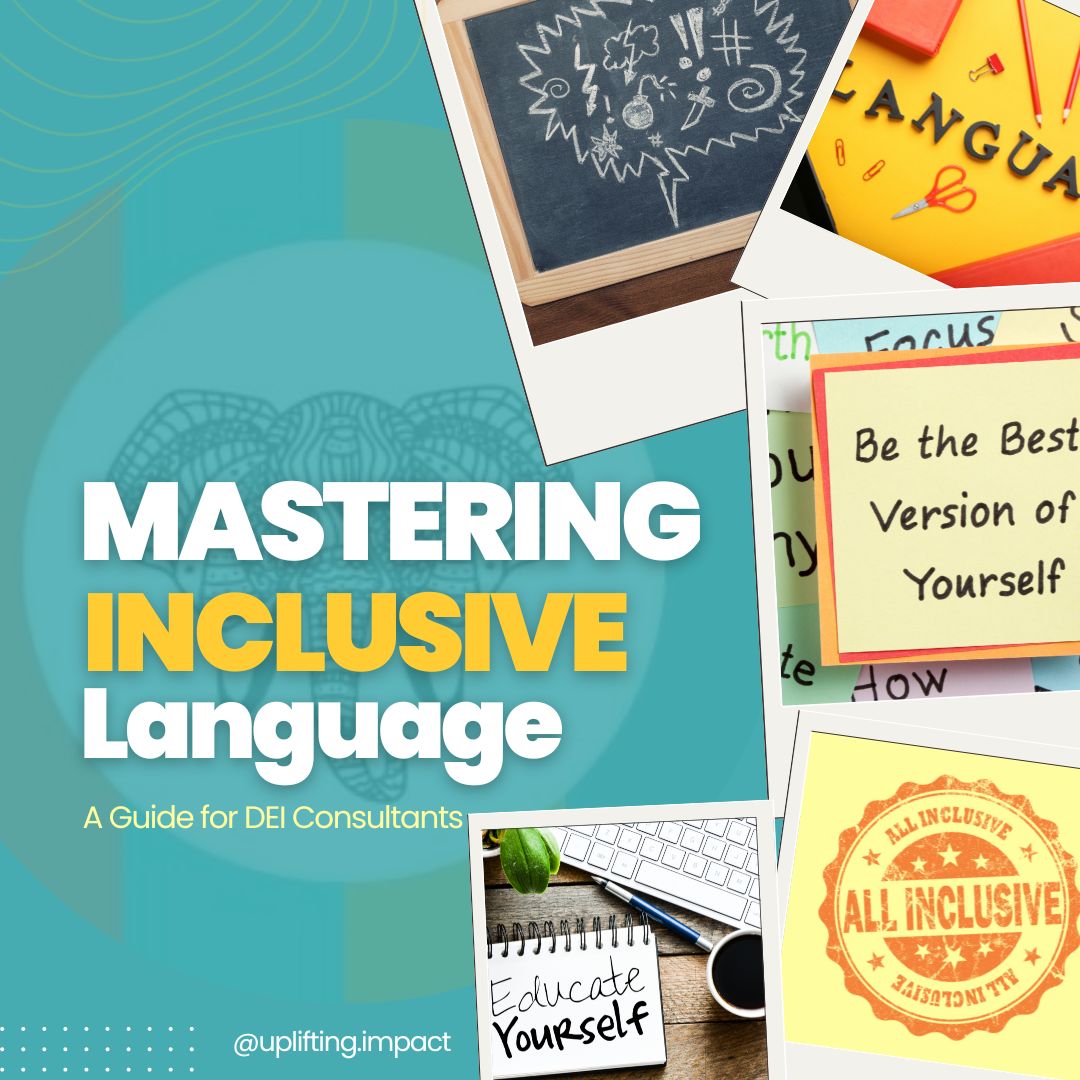Mastering Inclusive Language: A Guide for DEI Consultants

That old saying, “Sticks and stones may break my bones, but words will never hurt me” is misguided and false. Words have power. They can soothe someone who is in pain, or uplift someone who is feeling down. They can also have the opposite effect, by making people feel left out, lesser than, or ashamed. In the workplace, words can be used to unite or empower a team…or they can be used to sow division, exclude, or diminish certain voices.
Working in the diversity, equity, and inclusion (DEI) industry, I have witnessed how inclusive language can make an incredible difference in an organization. This goes beyond avoiding blatantly racist, sexist, or other offensive words and phrases (although that’s important too!). Rather, this means making an effort to use language that is welcoming and fostering a culture that acknowledges and embraces differences.
While it’s impossible to talk about all the nuances of language in a brief blog post, I will highlight some of the ways to improve your language inclusivity. Here are 5 suggestions:
Learn About and Cut Micro-Aggressions
Some language is subtly exclusionary or offensive without being overtly discriminatory. These are known as micro-aggressions, and they can have a significant impact on individuals in the workplace. It’s essential to educate yourself about different types of micro-aggressions and work to eliminate them from your vocabulary. Be sure to pay attention to the “tone” of a statement, in addition to what is being said.
Use Person-First Language
Person-first language can be defined as describing someone by their individuality rather than defining them by their identity. This means using phrases such as “a person with a disability” instead of “a disabled person” or “an individual who is transgender” instead of “a transgender individual.” Person-first language puts the person before the label, emphasizing their humanity and promoting inclusivity. By using person-first language, you acknowledge and respect the person’s identity while avoiding stereotypes or assumptions. It is a small yet powerful way to create a more inclusive and respectful workplace environment.
Respect Individual Identities
Every person is comprised of a kaleidoscope of identities, and it’s a good idea to not make snap judgments or assumptions about their identities. Instead, take the time to respect and acknowledge the unique identities of each individual. Avoid making assumptions or generalizations based on someone’s identity, and instead, take the time to listen and understand their individual story. Respect their preferred pronouns, names, and cultural practices. Creating a safe space where everyone feels seen and heard fosters a sense of belonging and allows for a more authentic workplace environment.
Use Inclusive Terms
Replace discriminatory or stigmatizing language with inclusive alternatives. For instance, use “partner” instead of “husband” or “wife” to be inclusive of various relationship types. Or, use gender-neutral language instead of assuming someone’s gender. Additionally, avoid language that reinforces stereotypes or biases, and instead, use terms that are inclusive and respectful. For example, instead of using terms like “young” or “old,” use “younger” or “older” to avoid ageism. By consciously choosing inclusive language, you create a more welcoming and supportive workplace environment for all individuals, regardless of their identities or backgrounds.
Educate Yourself
Language use and standards are constantly evolving, so this topic falls under the category of “life-long learning.” But don’t let that discourage you from trying! Your efforts could make an enormous difference to those around you. Instead, turn to resources such as the American Psychological Association’s Inclusive Language Guide to learn more about inclusive language and the proper use of terms. Stay updated on current research, articles, and discussions on the topic. Engage in conversations with colleagues, attend workshops, or participate in training sessions focused on inclusive language to keep learning and stay up to date.
When using inclusive language, it’s important to be open to feedback and willing to learn from your mistakes. No one is perfect, and it’s inevitable that you may slip up or unintentionally use language that is exclusionary. If someone points out an error, listen with an open mind and apologize if necessary. Use it as an opportunity to reflect and grow. By continually educating yourself and adapting your language, you can contribute to a workplace environment that values and includes all individuals.

